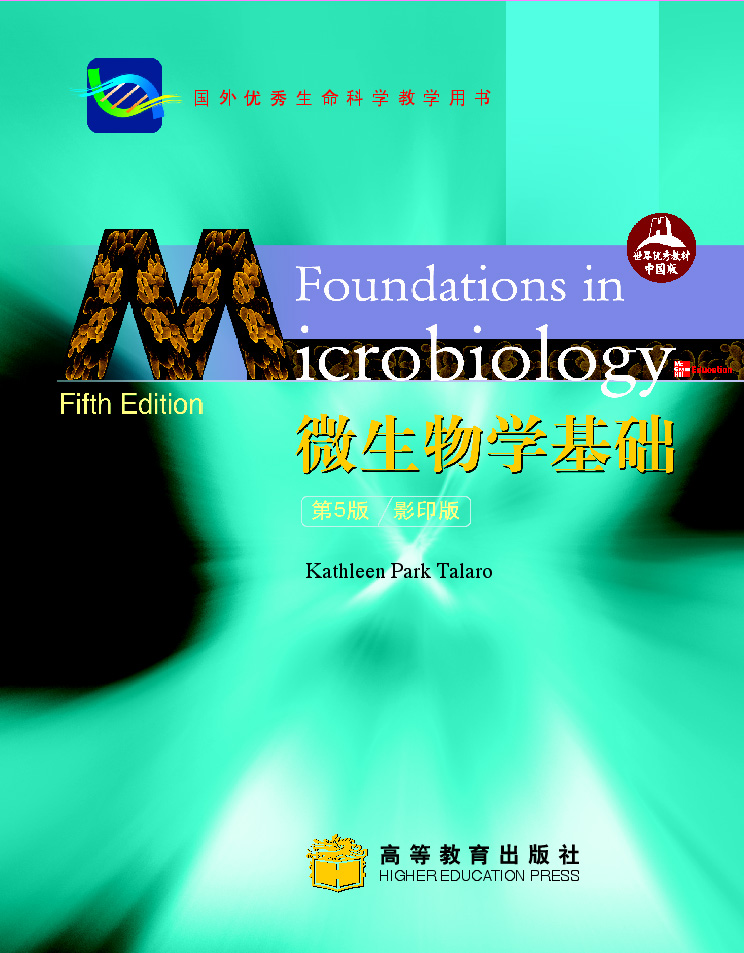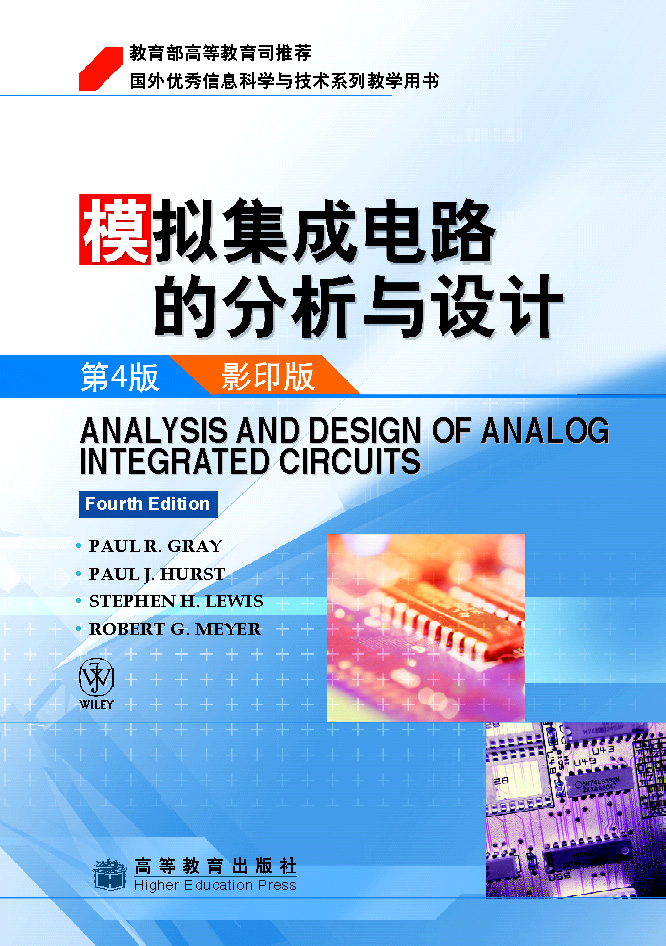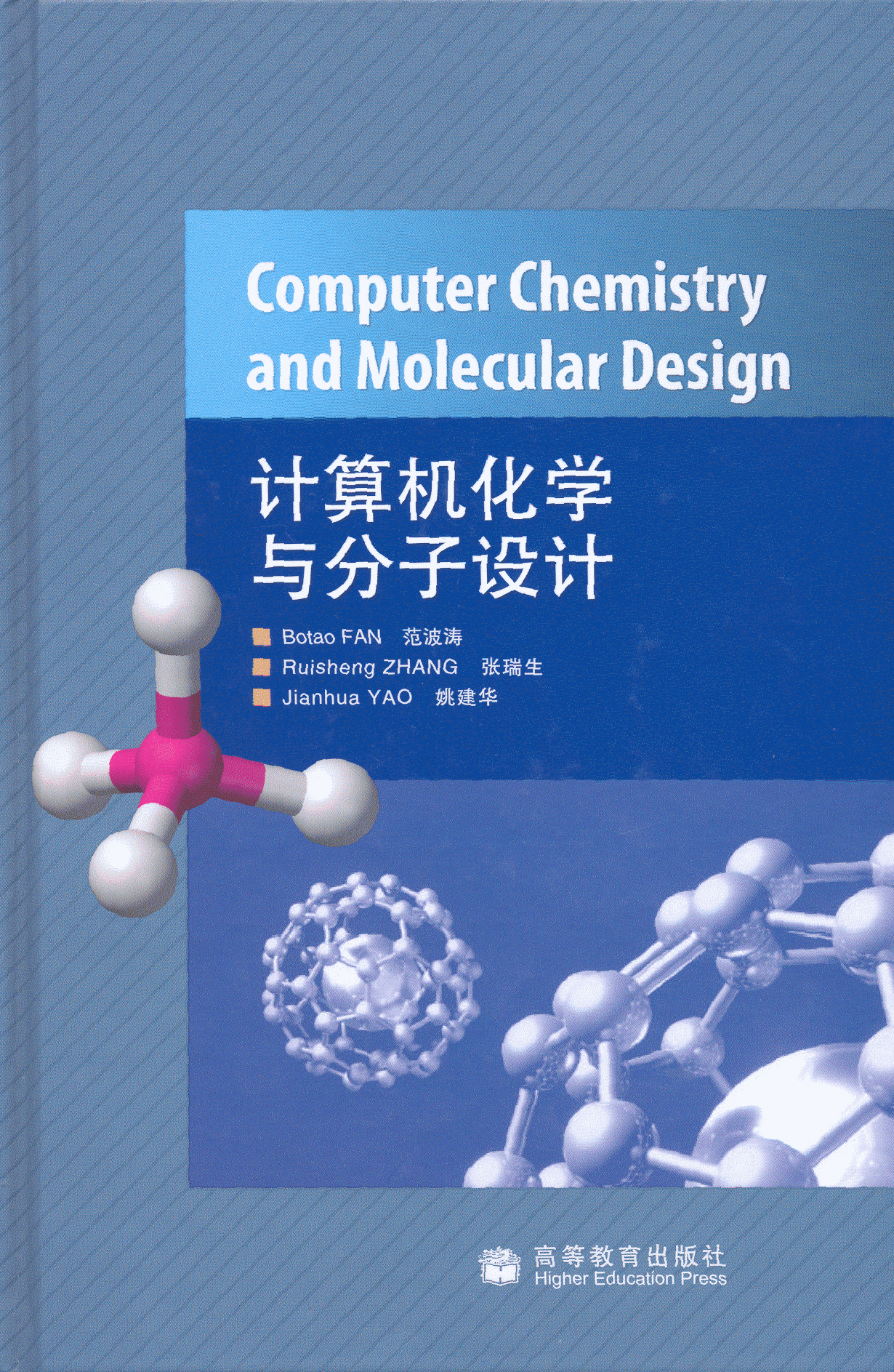微生物学基础(第5版)(影印版)
作者: Kathleen Park Talaro
出版时间:2005-08-17
出版社:高等教育出版社
- 高等教育出版社
- 9787040175806
- 1
- 247926
- 平装
- 16开
- 2005-08-17
- 1100
- 535
CHAPTER 1 The Main Themes of Microbiology
The Scope of Microbiology
The Impact of Microbes on Earth: Small Organisms with a Giant Effect
Microbial Involvement in Energy and Nutrient Flow
Human Use of Microorganisms
Infectious Diseases and the Human Condition
The General Characteristics of Microorganisms
Cellular Organization
A Note on Viruses
Microbial Dimensions: How Small Is Small?
Life-styles of Microorganisms
The Historical Foundations of Microbiology
The Development of the Microscope: "Seeing Is Believing"
The Establishment of the Scientific Method
The Development of Medical Microbiology
Taxonomy: Organizing, Classifying, and Naming Microorganisms
The Levels of Classification
Assigning Specific Names
The Origin and Evolution of Microorganisms
Systems of Presenting a Universal Tree of Life
HISTORICAL HIGHLIGHTS 1.1
The Fall of Mysticism and the Rise of Microbiology
MEDICAL MICROFILE 1.2
The Serendipity of the Scientific Method: Discovering Drugs
Chapter Capsule with Key Terms
Multiple-Choice Questions
Concept Questions
Critical-Thinking Questions
Internet Search Topics
CHAPTER 2 From Atoms to Cells:A Chemical Connection
Atoms, Bonds, and Molecules: Fundamental Building Blocks
Different Types of Atoms: Elements and Their Properties
The Major Elements of Life and Their Primary Characteristics
Bonds and Molecules
Covalent Bonds and Polarity: Molecules with Shared Electrons
Ionic Bonds: Electron Transfer Among Atoms
Solutions: Homogeneous Mixtures of Molecules
Acidity, Alkalinity, and the pH Scale
The Chemistry of Carbon and Organic Compounds
Functional Groups of Organic Compounds
Macromolecules: Superstructures of Life
Carbohydrates: Sugars and Polysaccharides
Lipids: Fats, Phospholipids, and Waxes
Proteins: Shapers of Life
The Nucleic Acids: A Cell Computer and Its Programs
Cells: Where Chemicals Come to Life
Fundamental Characteristics of Cells
Processes That Define Life
SPOTLIGHT ON MICROBIOLOGY 2.1
Searching for Ancient Life with Isotopes
MICROBITS 2.2
Redox: Electron Transfer and Oxidation-Reduction Reactions
MICROBITS 2.3
Membranes: Cellular Skins
Chapter Capsule with Key Terms
Multiple-Choice Questions
Concept Questions
Critical-Thinking Questions
Internet Search Topics
CHAPTER 3 Tools of the Laboratory:The Methods for Studying Microorganisms
Methods of Culturing Microorganisms-The Five I's
Inoculation: Producing a Culture
Isolation: Separating One Species from Another
Media: Providing Nutrients in the Laboratory
Incubation, Inspection, and Identification
The Microscope: Window on an Invisible Realm
Magnification and Microscope Design
Variations on the Optical Microscope
Electron Microscopy
Preparing Specimens for Optical Microscopes
MICROBITS 3.1
Animal Inoculation: "Living Media"
MICROBITS 3.2
The Evolution in Resolution: Probing Microscopes
MICROBITS 3.3
The Chemistry of Dyes and Staining
Chapter Capsule with Key Terms
Multiple-Choice Questions
Concept Questions
Critical-Thinking Questions
Internet Search Topics
CHAPTER 4 Procaryotic Profiles:The Bacteria and Archaea
Procaryotic Form and Function: External Structure
The Structure of a Generalized Procaryotic Cell
Appendages: Cell Extensions
The Cell Envelope: The Outer Wrapping of Bacteria
Structure of the Cell Wall 95
Cell Membrane Stmcture
Bacterial Form and Function: Internal Structure
Contents of the Cell Cytoplasm
Bacterial Endospores: An Extremely Resistant Stage
Bacterial Shapes, Arrangements, and Sizes
Bacterial Identification and Classification Systems
Methods Used in Bacterial Identification
Classification Systems in the Procaryotae
Survey of Procaryotic Groups with Unusual Characteristics
Unusual Forms of Medically Significant Bacteria
Free-Living Nonpathogenic Bacteria
Archaea: The Other Procaryotes
SPOTLIGHT ON MICROBIOLOGY 4.1
Biofilms-The Glue of Life
HISTORICAL HIGHLIGHTS 4.2
The Gram Stain:A Grand Stain
SPOTLIGHT ON MICROBIOLOGY 4.3
Redefining Bacterial Size
Chapter Capsule with Key Terms
Multiple-Choice Questions
Concela Questions
Crifical-Thinking Questions
Internet Search Topics
CHAPTER 5 Eucaryotic Cells and Microorganisms
The Natureof Eucaryotes
Form and Function of the Eucaryotic Cell: External Structures
Locomotor Appendages: Cilia and Flagella
Surface Structures: The Glycocalyx
The Cell Wall
The Cell Membrane
Form and Function of the Eucaryotic Cell: Internal Structures
The Nucleus: The Control Center
Endoplasmic Reticulum: A Passageway in the Cell
Golgi Apparatus: A Packaging Machine
Mitochondria: Energy Generators of the Cell
Chlomplasts: Photosynthesis Machines
The Cytoskeleton: A Support Network
Ribosomes: Protein Synthesizers
Survey of Eucaryotic Microorganisms
The Kingdom of the Fungi
Fungal Nutrition
Organization of Microscopic Fungi
Reproductive Strategies and Spore Formation
Fungal Classification
Fungal Identification and Cultivation
The Roles of Fungi in Nature and Industry
The Protists
The Algae: Photosynthetic Protists
Biology of the Protozoa
The Parasitic Helminths
General Worm Morphology
Life Cycles and Reproduction
A Helminth Cycle: The Pinworm
Helminth Classification and Identification
Distribution and Importance of Pamsitic Worms
SPOTLIGHT ON MICROBIOLOGY 5.1
The Extraordinary Emergence of Eucaryotic Cells
SPOTLIGHT ON MICROBIOLOGY 5.2
The Many Faces of Fungi
Chapter Capsule with Key Terms
Multiple-Choice Questions
Concept Questions
Critical-Thinking Questions
Internet Search Topics
CHAPTER 6 An Introduction to the Viruses
The Search for the Elusive Viruses
The Position of Viruses in the Biological Spectrum
The General Structureof Viruses
Size Range
Unique Viral Constituents: Capsids, Nucleic Acids, and Envelopes
How Viruses Are Classified and Named
Modes of Viral Multiplication
The Multiplication Cycle in Bacteriophages
Multiplication Cycles in Animal Viruses
Techniques in Cultivating and Identifying Animal Viruses
Using Live Animal Inoculation
Using Bird Embryos
Using Cell (Tissue) Culture Techniques
Medical Importance of Viruses
Other Noncellular Infectious Agents
Detection and Control of Viral Infections
Treatment of Animal Viral Infections
MEDICAL MICROFILM 6.1
A Positive View of Viruses
hapter Capsule with Key Terms
ultiple-Choice Questions 183
oncept Questions
ritical-Thinking Questions
nternet Search Topics
CHAPPTFR 7 Elements of Microbial Nutrition,Ecology, and Growth
Microbial Nutrition
Chemical Analysis of Microbial Cytoplasm
Sources of Essential Nutrients
How Microbes Feed: Nutritional Types
Transport Mechanisms for Nutrient Absorption
Environmental Factors That Influence Microbes
Temperature Adaptations
Gas Requirements
Effects of pH
Osmotic Pressure
Miscellaneous Environmental Factors
Ecological Associations Among Microorganisms
Interrelationships Between Microbes and Humans
The Study of Microbial Growth
The Basis of Population Growth: Binary Fission
The Rate of Population Growth
The Population Growth Curve
Stages in the Normal Growth Curve
Other Methods of Analyzing Population Growth
SPOTLIGHT ON MICROBIOLOGY 7.1
Life in the Extremes
Q MICROBITS 7.2
Dining with an Ameba
Q MICROBITS 7.3
Light-Driven Organic Synthesis
SPOTLIGHT ON MICROBIOLOGY 7.4
Cashing in on "Hot" Microbes
SPOTLIGHT ON MICROBIOLOGY 7.5
Life Together: Mumalism
MICROBITS 7.6
Steps in a Viable Plate Count-Batch Culture Method
Chapter Capsule with Key Terms
Multiple-Choice Questions
Concept Questions
Critical-Thinking Questions
Internet Search Topics
CHAPTER 8 Microbial Metabolism: The Chemical Crossroads of Life
The Metabolism of Microbes
Enzymes: Catalyzing the Chemical Reactions of Life
Regulation of Enzymatic Activity and Metabolic Pathways
The Pursuit and Utilization of Energy
Cell Energetics
A Closer Look at Biological Oxidation and Reduction
Adenosine Triphosphate: Metabolic Money
Pathways of Bioenergetics
Catabolism: An Overview of Nutrient Breakdown and Energy Release
Energy Strategies in Microorganisms
Pymvic Acid-A Central Metabolite
The Tricarboxylic Acid Cycle-A Carbon and Energy Wheel
The Respiratory Chain: Electron Transport and Oxidative Phosphorylation
Summary of Aerobic Respimtion
Anaerobic Respiration
The Importance of Fermentation
Biosynthesis and the Crossing Pathways of Metabolism
The Frugality of the Cell-Waste Not, Want Not
MICROBITS 8.1
Enzymes as Biochemical Levers
MICROBITS 8.2
Unconventional Enzymes
MICROBITS 8.3
The Enzyme Name Game
HISTORICAL HIGHLIGHTS 8.4
Pasteur and the Wine-to-Vinegar Connection
MICROBITS 8.5
Fermentation and Biochemical Testing
Chapter Capsule with Key Terms
Multiple-Choice Questions
Concept Questions
Critical-Thinking Questions
Internet Search Topics
CHAPTER 9 Microbial Genetics
Introduction to Genetics and Genes: Unlocking the Secrets of Heredity
The Nature of the Genetic Material
The DNA Code: A Simple Yet Profound Message
The Significance of DNA Structure
DNA Replication: Preserving the Code and Passing It On
Applications of the DNA Code: Transcription and Translation
The Gene-Protein Connection
The Major Participants in Transcription and Translation
Transcription: The First Stage of Gene Expression
Translation: The Second Stage of Gene Expression
Eucaryotic Transcription and Translation: Similar Yet Different
The Genetics of Animal Viruses
Genetic Regulation of Protein Synthesis and Metabolism
The Lactose Operon: A Model for Inducible Gene Regulation in Bacteria
A Repressible Operon
Antibiotics That Affect Transcription and Translation
Mutations: Changes in the Genetic Code
Causes of Mutations
Categories of Mutations
Repair of Mutations
The Ames Test
Positive and Negative Effects of Mutations
DNA Recombination Events
Transmission of Genetic Material in Bacteria
HISTORICAL HIGHLGHTS 9.1
Deciphering the Structure of DNA 254
MICROBITS 9.2
The Packaging of DNA: Winding, Twisting, and Coiling
MICROBITS 9.3
Small RNAs: An Old Dog Shows Off Some New (?) Tricks
Chapter Capsule with Key Terms
Multiple-Choice Questions
Concept Questions
Critical-Thinking Questions
Internet Search Topics
CHAPTER10 Genetic Engineering:A Revolution in Molecular Biology
Basic Elements and Applications of Genetic Engineering
��. Tools and Techniques of Genetic Engineering
DNA: A. Amazing Molecule
��. Methods in Recombinant DNA Technology: How to Imitate Nature
Technical Aspects of Recombinant DNA and Gene Cloning
Construction of a Recombinant, Insertion into a Cloning Host, and Genetic Expression
��. Biochemical Products of Recombinant DNA Technology
��. Genetically Modified Organisms
Recombinant Microbes: Modified Bacteria and Viruses
Transgenic Plants: Improving Crops and Foods
Transgenic Animals: Engineering Embryos
��. Genetic Treatments: Introducing DNA into the Body
Gene Therapy
Antisense and Triplex DNA Technology: Genetic Medicines
��. Genome Analysis: Maps, Fingerprints, and Family Trees
Genome Mapping and Screening: An Atlas of the Genome
DNA Fingerprinting: A Unique Picture of a Genome
MICROBITS 10.1
Okay, the Genome's Sequenced-What's Next?
SPOTLIGHT ON MICROBIOLOGY 10.2
A Moment to Think
MICROBITS 10.3
Better Bioterrorism Through Biotechnology?
Chapter Capsule with Key Terms
Multiple-Choice Questions
Concept Questions
Critical-Thinking Questions
Internet Search Topics
CHAPTFR 11 Physical and Chemical Control of Microbes
Controlling Microorganisms
General Considerations in Microbial Control
Relative Resistance of Microbial Forms
Terminology and Methods of Microbial Control
What Is Microbial Death?
How Antimicrobial Agents Work: Their Modes of Action
Methods of Physical Control
Heat As an Agent of Microbial Control
The Effects of Cold and Desiccation
Radiation Asa Microbial Control Agent
Sound Waves in Microbial Control
Sterilization by Filtration: Techniques for Removing Microbes
Chemical Agents in Microbial Control
Choosing a Microbicidal Chemical
Factors That Affect the Germicidal Activity of Chemicals
Germicidal Categories According to Chemical Group
HISTORICAL HIGHLIGHTS 11.1
Microbial Control in Ancient Times
SPOTLIGHT ON MICROBIOLOGY 11.2
Pathogen Paranoia: "The Only Good Microbe Is a Dead Microbe"
HISTORICAL HIGHLIGHTS 11.3
The Quest for Sterile Skin
SPOTLIGHT ON MICROBIOLOGY 11.4
Decontaminating Congress
Chapter Capsule with Key Terms
Muldpie-Choice Questions
Concept Questions
Critical-Thinting Questions
Intemet Search Topics
CHAPTER12 Drugs, Microbes, Host-The Elements of Chemotherapy
Principles of Antimicrobial Therapy
The Origins of Antimicrobial Drugs
Interactions Between Drug and Microbe
Mechanisms of Drug Action
Survey of Major Antimicrobial Drug Groups
Antibacterial Drugs
Synthetic Antibacterial Drugs
Agents to Treat Fungal Infections
Antiparasitic Chemotherapy
Antiviral Chemotherapeutic Agents
The Acquisition of Drug Resistance
Characteristics of Host-Drug Reactions
Toxicity to Organs
Allergic Responses to Drugs
Suppression and Alteration of the Microflom by Antimicrobics
Considerations in Selecting an Antimicrobic Drug
Identifying the Agent
Testing for the Drug Susceptibility of Microorganisms
The MIC and Therapeutic Index
An Antimicrobic Drug Dilemma
HISTORICAL HIGHLIGHTS 12.1
From Witchcraft to Wonder Drugs
MICROBITS 12.2
A Modem Quest for Designer Drugs
MICROBITS 12.3
Household Remedies-From Apples to Zinc
SPOTLIGHT ON MICROBIOLOGY 12.4
The Rise of Drug Resistance
Chapter Capsule with Key Terms
Multiple-Choice Questions
Concept Questions
Critical-Thinking Questions
Internet Search Topics
CHAPTER 13 Microbe-Human Interactions: Infection and Disease
The Human Host
Contact, Infection, Disease-A Continuum
Resident Flora: The Human Asa Habitat
Indigenous Flora of Specific Regions
The Progress of an Infection
The Portal of Entry: Gateway to Infection
The Size of the Inoculum
Mechanisms of Invasion and Establishment of the Pathogen
Signs and Symptoms: Warning Signals of Disease
The Portal of Exit: Vacating the Host
The Persistence of Microbes and Pathologic Conditions
Epidemiology: The Study of Disease in Populations
Who, When, and Where? Tracking Disease in the Population
Reservoirs: Where Pathogens Persist
How and Why? The Acquisition and Transmission of InfectiousAgents
Nosocomial Infections: The Hospital Asa Source of Disease
Which Agent Is the Cause? Using Koch's Postulates to Determine Etiology
MICROBITS 13.1
Life Without Flom
MEDICAL MICROFILE 13.2
The Classic Stages of Clinical Infections
MICROBITS 13.3
A Quick Guide to the Terminology of Infection and Disease
HISTORICAL HIGHLIGHTS 13.4
The History of Human Guinea Pigs
Chapter Capsule with Key Terms
Multiple-Choice Questions
Concept Questions
Critical-Thinking Questions
Internet Search Topics
CHAPTER 14 The Nature of Host Defenses
Defense Mechanisms of the Host in Perspective
Barriers at the Portal of Entry: A First Line of Defense
Introducing the Immune System
Systems Involved in Immune Defenses
The Communicating Body Compartments
Nonspecific Immune Reactions of the Body's Compartments
The Inflammatory Response: A Complex Concert of Reactions to Injury
The Stages of Inflammation
Phagocytes: The Ever-Present Busybodies of Inflammation and Specific Immunity
Contributors to the Body's Chemical Immunity
Specific Immunities: The Third and Final Line of Defense
MEDICAL MICROPLLE 14.1
When Inflammation Gets Out of Hand
MEDICAL MICROPILE 14.2
The Dynamics of Inflammatory Mediators
MEDICAL MICROPILE 14.3
Some Facts About Fever
MICROBITS 14.4
Haw Complement Works
Chapter Capsule with Key Terms
Multiple-Choice Quesfions
Concept Questions
Critical-Thinking Questions
Internet Search Topics
CHAPTER 15 The Acquisition of Specific Immunity and Its Applications
Further Explorations into the Ilntrame System
The Dual Nature of Specific Immune Responses
��.Development of the Dual Lymphocyte System
��.Entrance and Presentation of Antigens and Clonal Selection
��.Band ��. T Activation of Lymphocytes and Clonal Expansion
��.Products of B Lymphocytes: Antibody Structure and Functions
��.How T Cells Respond to Antigen: Cell-Mediated Immunity (CMI)
Essential Preliminary Concepts for Understanding Immune Reactions of Sections ��-��
Marken on Cell Surfaces Involved in Recognition of Self and Nonself
The Origin of Diversity and Specificity in the Immune Response
The Lymphocyte Response System in Depth
��.Development of the Dual Lymphocyte System: Stages in Origin,Differentiation, and Maturation
��.Entrance and Processing of Antigens and Clonal Selection
��.B Activation of B Lymphocytes: Clonal Expansion and Antibody Production
��.Products of B Lymphocytes: Antibody Structure and Functions
��.T Activation of T Lymphocytes and ��.How T Cells Respond to Antigen: Cell-Mediated Immunity (CMI)
A Practical Scheme for Classifying Specific Immunities
MEDICAL MICROPILE 15.1
Monoclonal Antibodies: Variety Without Limit
SPOTLIGHT ON MICROBIOLOGY 15.2
Lymphokines: Chemical Products of T Cells
MEDICAL MICROFILE 15.3
Breast Feeding: The Gift of Antibodies
Chapter Capsule with Key Terms
Multiple-Choice Questions
Concept Questions
Critical-Thinking Questions
Internet Search Topics
CHAPTER 16 Immunization and Immune Assays
Practical Applications of Immunologic Function
Immunization: Methods of Manipulating Immunity for Therapeutic Purposes
Serological and Immune Tests: Measuring the Immune Response in Vitro
HISTORICAL HIGHLIGHTS 16.1
The Lively History of Active Immunization
MEDICAL MICROFILE 16.2
When Positive Is Negative: How to Interpret Serological Test Results
Chapter Capsule with Key Terms
Multiple-Choice Questions
Concept Questions
Critical-Thinking Questions
Internet Search Topics
CHAPTER 17 Disorders in Immunity
The Immune Response: A Two-Sided Coin
Overreactions to Antigens: Allergy/Hypersensitivity
Type �� Allergic Reactions: Atopy and Anaphylaxis
Epidemiology and Modes of Contact with Allergens
The Nature of Allergens and Their Portals of Entry
Mechanisms of Type I Allergy: Sensitization and Provocation
Cytokines, Target Organs, and Allergic Symptoms
Specific Diseases Associated with IgE- and Mast Cell-Mediated Allergy
Anaphylaxis: An Overpowering Systemic Reaction
Diagnosis of Allergy
Treatment and Prevention of Allergy
Type �� Hypersensitivities: Reactions That Lyse Foreign Cells
Human Blood Types
The Basis of Human ABO Antigens and Blood Types
Antibodies Against A and B Antigens
The Rh Factor and Its Clinical Importance
Other RBCAntigens
Type �� Hypersensitivities: Immune Complex Reactions
Mechanisms of Immune Complex Disease
Types of ]mmune Complex Disease
An Inappropriate Response Against Self, or Autoimmuniry
Type �� Hypersensitivities: Cell-Mediated (Delayed) Reactions
Delayed-Type Hypersensitivity
T Cells and Their Role in Organ Transplantation
Immunodeficiency Diseases: Hyposensitivity of the Immune System
Primary Immunodeficiency Diseases
Secondary Immunodeficiency Diseases
Cancer: Cells Out of Control
Characteristics and Classification of Tlimors and Cancers
The Function of the Immune System in Cancer
MEDICAL MICROFILE 17.1
Of What Value Is Allergy?
MEDICAL MICROFILM 17.2
Why Doesn't a Mother Reject Her Fetus?
SPOTLIGHT ON MICROBIOLOGY 17.3
Pretty, Pesky, Poisonous Plants
MEDICAL MICROFILE 17.4
The Mechanics of Bone Marrow Transplantation
SPOTLIGHT ON MICROBIOLOGY 17.5
Answer to the Bubble Boy Mystery
SPOTLIGHT ON MICROBIOLOGY 17.6
Hot on the Trail of Cancer Clues
Chapter Capsule with Key Terms
Multiple-Choice Questions
Concept Questions
Critical-Thinking Questions
Internet Search Topics
Answers to Muloplo-Choice Questions and Selected Matching Qaestions
Glossary
Credits
index








